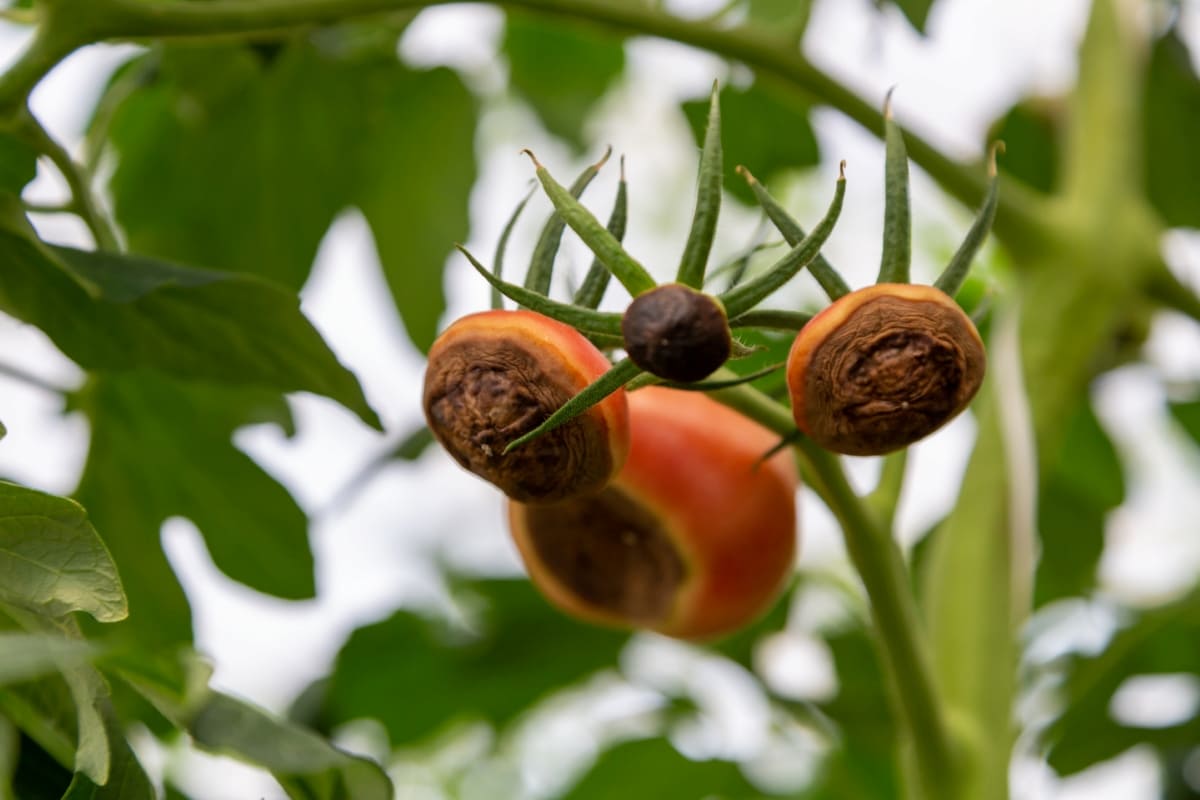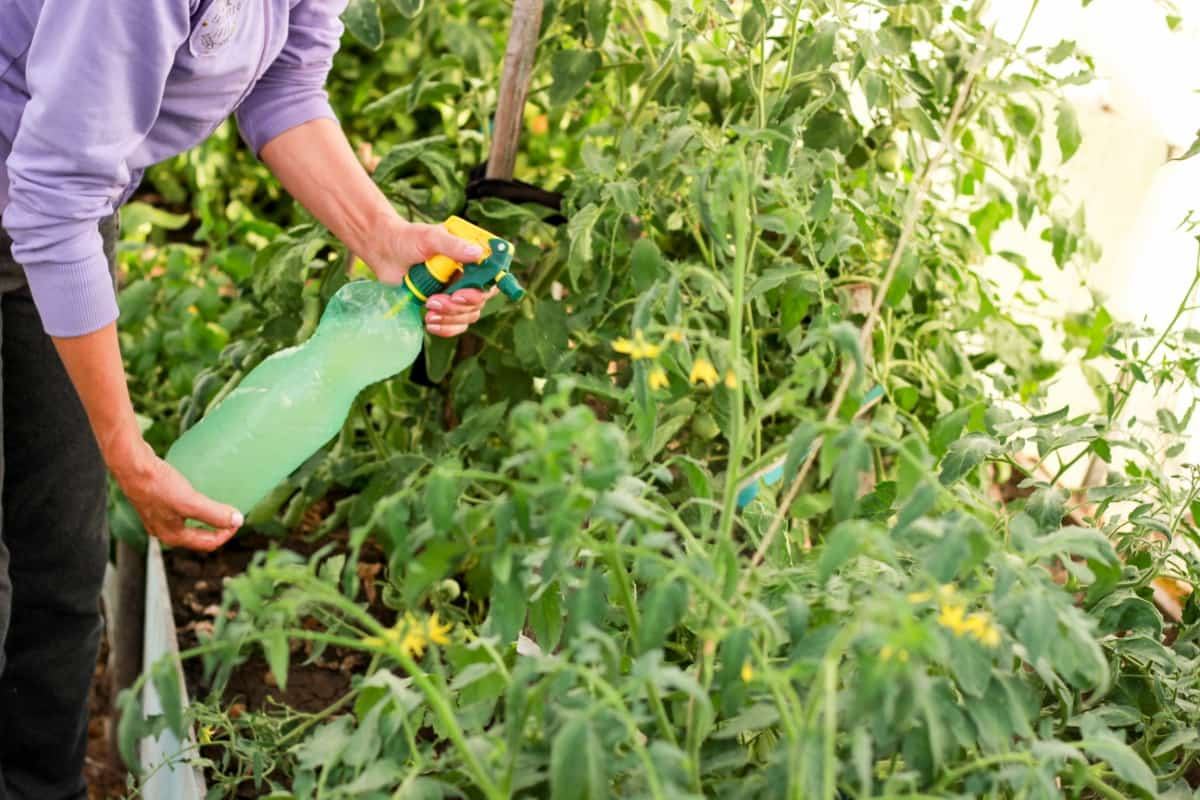Learn easy, natural, and organic ways to avoid tomato rot. Investigate practical solutions to manage this problem without using chemicals. Discover easy-to-use yet effective ways to protect your tomatoes so you may produce a robust and healthy crop while adhering to sustainable gardening practices that are kind to the earth.

How to Prevent Tomato Rot Naturally
Understanding Tomato Rot: A Natural Approach
Tomato rot is a prevalent issue that many gardeners who cultivate this tasty fruit encounter. Numerous fungal diseases that infect tomato plants and wreak havoc on the fruit are the cause of it. Thankfully, there are safe, non-chemical alternatives for controlling and preventing tomato rot. In this post, we’ll look at some of the best organic tomato care techniques to keep your tomatoes strong and free of rot.
Harnessing the Power of Organic Mulching
The application of organic mulch is one of the best ways to avoid tomato rot. A coating of organic material called mulch is applied to the soil surrounding plants. It aids in controlling soil temperature, weed suppression, moisture conservation, and nutrient enrichment. Mulch also forms a protective layer between the fruit and the earth, keeping fungal disease spores from falling onto the tomatoes when it rains or becomes wet.
Crop Rotation Strategies for Disease Prevention
Crop rotation is another crucial method for avoiding tomato rot. Planting different crops in the same location over time is known as crop rotation. This aids in disrupting the insect and disease cycle that may harm particular crops. For instance, planting tomatoes in the same location each year raises the possibility of tomato rot and other soil-borne illnesses. You may boost soil fertility and lessen the accumulation of pests and diseases by rotating your crops.
Soil Temperature and Moisture Management
Soil temperature and moisture are also crucial factors for preventing tomato rot. Tomatoes prefer warm, moist soil, but not too wet or too cold. If the soil is too wet, it can create favorable conditions for fungal growth and infection. If the soil is too cold, it can slow down the growth and development of the plants and make them more susceptible to diseases.
In case you missed it: How to Control Leaf Miner in Tomato with Natural, Organic, Chemical, and Homemade Spray

To maintain optimal soil temperature and moisture, you should water your tomatoes deeply but infrequently and avoid watering them in the evening or when the weather is cool. It would help if you also used a thermometer to check the soil temperature before planting your tomatoes and avoid planting them too early or too late in the season.
The Impact of Proper Spacing on Tomato Health
Another important element in preventing tomato rot is proper spacing. The space between plants in a row and between rows is referred to as spacing. Plant air circulation, solar exposure, and nutrient availability are all impacted by spacing. An atmosphere that is crowded and humid, which encourages fungal growth and infection, can be produced by plants that are too near to one another.
The plants may become weak and stressed if they are too far away from one another due to competition for water and nutrients. You should adhere to the instructions on the seed packet or plant label for your tomato variety in order to guarantee appropriate spacing.
Neem Oil: A Natural Fungal Fighter
An all-natural remedy that can assist you in combating tomato rot naturally is neem oil. Neem oil is made from the seeds of the neem tree, a tropical shrub native to India. Because of its antifungal, antibacterial, and insecticidal qualities, neem oil can shield your plants from a range of pests and diseases.
Neem oil stops insects and fungal infections from multiplying and spreading by interfering with their life cycles. Every seven to fourteen days, you should put diluted neem oil on your plants; ideally, you should do this in the morning or evening when the sun isn’t as powerful.
Nurturing Healthy Tomato Plants Organically
Nurturing healthy tomato plants organically is good not only for your tomatoes but also for your health and the environment. Healthy tomato plants are more resistant to diseases and pests, produce more fruits, and have better flavor and nutrition. Organic gardening practices also help to preserve the soil quality, biodiversity, and ecological balance of your garden. By following these natural methods for preventing and controlling tomato rot, you can enjoy a bountiful harvest of fresh and tasty tomatoes.
In case you missed it: Using Neem Oil on Tomato Plants: A Step-By-Step Guide to Natural Way to Control Tomato Pests

Effective Methods for Natural Tomato Rot Control
Tomato rot is a common issue affecting gardeners due to factors like lack of calcium, uneven watering, poor soil pH, root damage, and fungal infections. To control it, use organic mulches like straw, hay, grass clippings, newspaper, or compost to retain soil moisture and prevent rot. Regularly check and adjust soil pH to ensure the optimal range of 6.2 to 6.8.
Water plants consistently and correctly, especially during drought or heat stress, to prevent rot. Avoid using nitrogen-heavy fertilizers, which can interfere with calcium uptake and can be replaced with a fertilizer high in superphosphate but low in nitrogen. Additionally, enrich the soil with compost or calcium-rich sources.
Straw Mulching: A Shield Against Tomato Rot
Straw mulching is a simple and effective method to protect tomato plants from rotting by covering the soil with a layer of straw. This helps retain moisture, prevent weeds, and keep fruits clean and dry. It also improves soil quality and fertility by adding organic matter as it decomposes. To apply, wait for established plants to form flowers, then spread a 6-inch-thick layer of straw around the plants. This reduces watering and weeding, increasing tomato yield and quality.
Frequently Asked Questions (FAQ) on Tomato Rot
How Do I Identify the Early Signs of Tomato Rot?
Look for brown or black lesions on the bottom of tomatoes, known as blossom-end rot, as an early indication of tomato rot. Prompt action is crucial.
What is the Role of Calcium in Preventing Tomato Rot?
Adequate calcium levels in the soil are essential to prevent blossom-end rot, a common type of tomato rot. Ensure balanced soil fertility for optimal plant health.
What Role Does Sunlight Play in Preventing Tomato Rot?
Ample sunlight exposure helps keep the plants dry and minimizes humidity, creating an unfavorable environment for the development of fungal infections leading to tomato rot.
In case you missed it: How to Use Baking Soda to Prevent Tomato Blossom End Rot

Conclusion
Naturally, preventing tomato rot requires careful methods. Use organic mulching, like straw, to control the moisture and temperature of the soil. Crop rotation can prevent the spread of disease. For strong, healthy tomato plants, use neem oil for its antifungal qualities and make sure the plants are properly spaced to allow for air circulation.
- Feed Your Flock for Less: Top 10 Tips to Save on Chicken Feed
- Ultimate Guide to Ossabaw Island Hog: Breeding, Raising, Diet, and Care
- Hatching Answers: The Top 10 Reasons Your Chickens Aren’t Laying Eggs
- Eggs and Economics: Breaking Down the Cost of Raising Backyard Chickens
- Defend Your Greens: Proven Methods to Keep Iguanas Out of Your Garden
- Ultimate Guide to Cinnamon Queen Chicken: A Comprehensive Guide for Beginners
- Ultimate Guide to California Tan Chicken: Breeding, Raising, Diet, Egg-Production and Care
- Ultimate Guide to Marsh Daisy Chicken: Breeding, Raising, Diet, and Care
- 10 Types of Chicken Farming Businesses You Can Start for Profits